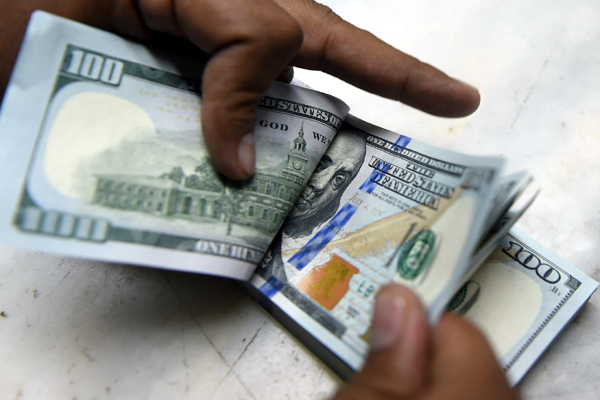
NEW YORK: The dollar edged higher on Tuesday, underpinned by solid US data, and headed toward its strongest monthly performance since November 2016.
The greenback jumped against the Canadian dollar after the concurrent release of US and Canadian data showing solid labor costs for the United States and disappointing growth and inflation readings for its northern neighbor.
Canada’s gross domestic product fell unexpectedly in August, the first decline in almost a year, led by a 1 percent drop in manufacturing. US employment costs showed the largest year-on-year increase in 2-1/2 years.
That pushed the dollar index, which tracks the greenback against the Canadian dollar and five other major currencies, to 94.703, its highest level of the day. The index was on track for its best month since November with a 1.65 percent climb.
US consumer confidence rose to a nearly 17-year high, housing price data was solid and the Chicago purchasing managers index exceeded expectations, showing the economy continued to expand.
Additionally, analysts said, investors were unenthusiastic about making big bets ahead of upcoming central bank meetings by the Bank of England and the US Federal Reserve, as well as economic data due to be released later this week featuring the US nonfarm payrolls report.
“There’s a lot of moving parts to the market this week,” said Shaun Osborne, currency strategist at Scotia Bank in Toronto, pointing to the central bank meetings, data and the expectation that US President Donald Trump will announce his choice to lead the Federal Reserve on Thursday.
Osborne added that market participants were watching for “another shoe to drop” in the investigation of the Trump campaign’s connection to Russia. Former Campaign Manager Paul Manafort and his business associate, Rick Gate, were charged as part of the probe into Russian interference in last year’s elections. Separately, it was announced that former campaign adviser George Papadopolous had pleaded guilty to lying to federal agents.
“I think markets are going to be conscious of that story continuing to leak out and potentially have an impact on the market,” Osborne said. “Plus, month-end is really limiting the desire to get involved beyond what’s required.”
The Bank of Japan kept its monetary policy steady on Tuesday, as widely expected, while slightly lowering its inflation forecast for the current fiscal year.
The dollar was last up 0.25 percent against the yen to 113.44 yen. It earlier fell to its lowest since Oct. 20.
Source: Brecorder.com



























